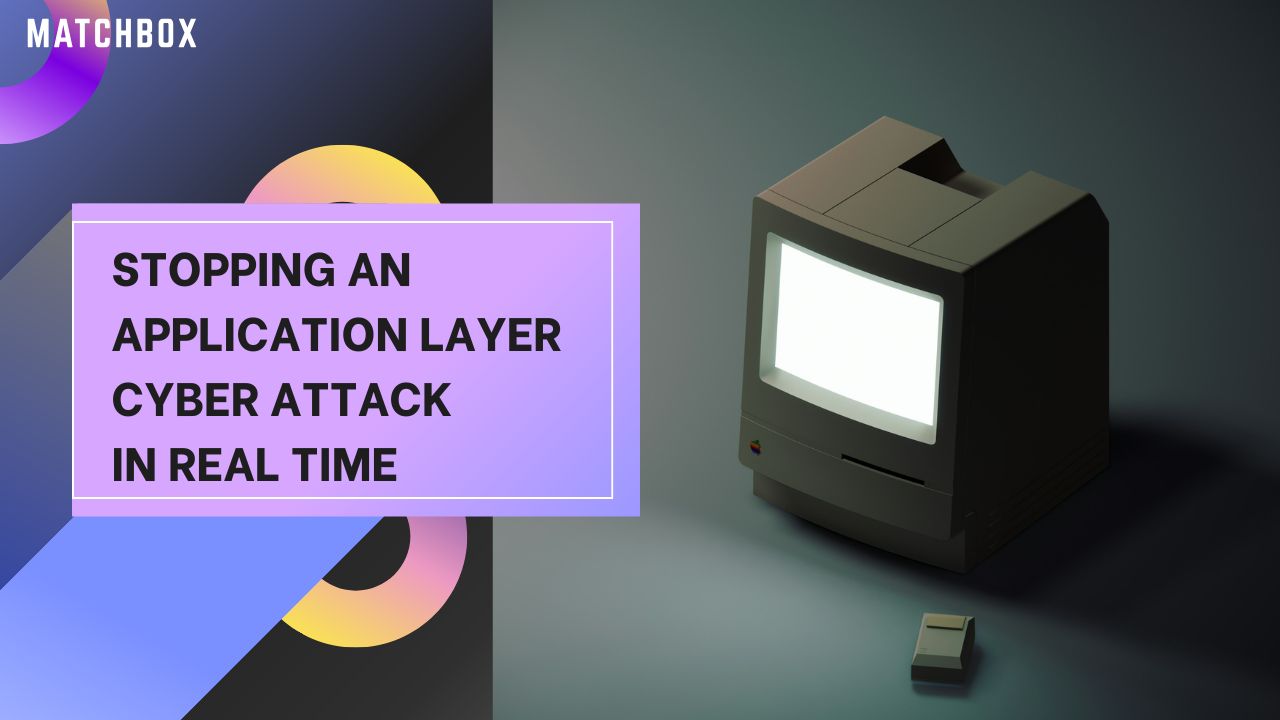Estimated reading time: 6 minutes
DDoS, Application Layer, and reconnaissance attacks are growing in scale and frequency. The rise of automation and AI-driven attack tools has made it easier than ever for malicious actors to launch coordinated campaigns at scale. Cybersecurity firm Akamai observed 311 billion attacks in 2024 alone. Let’s talk more about stopping an application layer cyber attack in real time.
In this case, an ecommerce WordPress site—where downtime directly impacts revenue and customer trust—was the target. This study highlights how we identified and neutralized a coordinated attack that exploited server resources through high-volume malicious requests.
TL;DR: Stopping an Application Layer Cyber Attack In Real Time
We recently mitigated a brute force cyber attack on a WordPress ecommerce site that brought the server down. The attack generated an overwhelming number of 404 errors by targeting non-existent files with a rotating pool of IPs and suspicious user agents. By enabling Cloudflare’s Under Attack Mode and deploying custom WAF rules, we stopped the attack in under 40 minutes. This case illustrates how layered defenses, log analysis, and rapid incident response are vital in modern cybersecurity.
The First Signal: An Unexpected Outage
The incident began with a site outage alert. Almost immediately, we saw the server overwhelmed by an unusually high volume of requests. The logs revealed thousands of 404 errors in rapid succession; an indicator that malicious traffic was probing for weak points rather than accessing legitimate content.
Further inspection uncovered three notable patterns:
- Rotating IP addresses, making traditional IP-based blocking ineffective.
- Requests targeting sensitive file types (configuration and backup files).
- A spoofed user agent string: many requests identified themselves as browsing via an iPad with “KHTML, like Gecko,” a telltale sign of automated traffic masking as consumer devices.
Containment: Immediate Defensive Actions
For an ecommerce site, downtime isn’t just inconvenient. It means lost transactions and customer frustration. Our first priority was to stabilize the server. We quickly:
- Enabled Cloudflare Under Attack Mode to filter out automated traffic and reduce load. [Cloudflare – Under Attack Mode]
- Monitored incoming requests to ensure legitimate users still had access while malicious traffic was challenged.
As a result, downtime was limited to less than five minutes, minimizing impact for online sales and customer experience.
This initial move restored stability and gave us the breathing room needed to analyze the attack.
Analysis: Identifying The Attack Pattern
With the server back online, we turned to the logs. The data confirmed this was not random noise:
- Attack traffic consistently requested non-existent files, suggesting an automated scan for common vulnerabilities.
- The volume and speed of requests were characteristic of brute force reconnaissance rather than opportunistic visits.
- Traffic patterns showed that the attacker’s objective was not to access content but to find a single unprotected entry point.
Targeted Mitigation: Cutting Off The Attack
Once the pattern was established, we deployed precise countermeasures:
- Custom WAF rules to block requests for the identified file types. [Cloudflare – Custom WAF Rules]
- Rate limiting to throttle abnormal bursts of requests.
- Continued monitoring to confirm the effectiveness of the blocks.
- Blocked International Traffic since this specific site does not do business internationally. Doing so allowed us to filter out any traffic that we know is not a potential customer, furthering security.
Within 40 minutes of the first alert, the attack was neutralized and the ecommerce site stabilized with no data compromise.
Key Takeaways: Stopping an Application Layer Cyber Attack In Real Time
- Speed Matters: The time from detection to action determines whether downtime is minutes or hours.
- Logs Don’t Lie: Rapid log analysis provided the critical insights to identify and target malicious behavior.
- Defense in Depth Works: A layered approach: server monitoring, Cloudflare protections, and custom WAF rules. Such an approach that was essential to contain the threat.
- Ecommerce Has More to Lose: For online businesses, even brief downtime can lead to immediate financial and reputational impact.
- Automation is Evolving: User-agent spoofing and rotating IP pools are now standard tactics in application layer attacks.
Broader Takeaway For Businesses
Cyber threats are not isolated events; they’re constant, automated, and indiscriminate. For ecommerce organizations especially, this means:
- Monitoring and alerting systems must be in place to catch downtime and anomalies immediately.
- WAF and DDoS protections should be configured proactively, not reactively.
- Incident response protocols ensure teams can act quickly under pressure.
Conclusion
This case illustrates the importance of vigilance and layered defenses in cybersecurity. While brute force attacks remain common, their sophistication is evolving. Ecommerce businesses that prioritize real-time monitoring, proactive defenses, and rapid incident response will be best positioned to withstand these inevitable threats.
If your organization is ready to strengthen its security posture, contact Matchbox Design Group today to learn more about becoming a maintenance and support partner.
Questions: How Can You Keep A Site Secure in the Modern AI Landscape?
A brute force attack usually refers to repeated attempts to guess login credentials. However, the term is sometimes used more broadly to describe high-volume automated attacks. In this case study, the attack was closer to an application layer (Layer 7) attack, where a large number of HTTP requests were sent to overload the WordPress ecommerce site.
A distributed denial-of-service (DDoS) attack often targets network or bandwidth capacity (Layers 3 and 4). An application layer attack—also called a Layer 7 attack—targets the application itself, sending large volumes of HTTP requests to exhaust server resources.
The attack generated a huge spike in 404 errors by requesting non-existent files. This overwhelmed the server’s resources, briefly taking the site offline before defenses were activated.
We enabled Cloudflare’s Under Attack Mode to filter automated traffic, then deployed custom WAF rules to block the malicious requests. This layered defense restored stability in under five minutes and fully mitigated the attack within 40 minutes.
No. The attacker was scanning for weaknesses by targeting sensitive file types, but because of proactive defenses and rapid response, no data was exposed.
– Use a Web Application Firewall (WAF) to filter malicious traffic.
– Enable DDoS and bot protection services, such as Cloudflare Under Attack Mode.
– Monitor logs for unusual request patterns or surges in 404 errors.
– Have an incident response plan so your team can act quickly if the site goes down.
Yes. We specialize in WordPress and ecommerce security, with proactive monitoring, maintenance, and layered defenses to keep your site online and your customer data safe.
The best way to get started is by becoming a maintenance and support partner. We’ll audit your site, configure protections, and put monitoring in place so your business is ready for whatever comes next. Contact us today to learn more.



